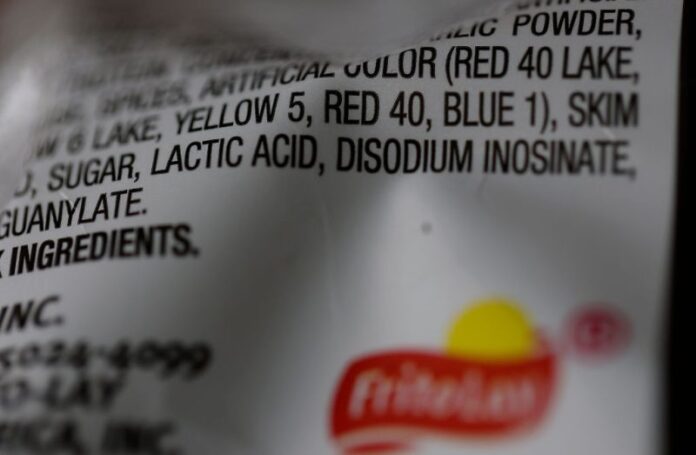
(NEXSTAR) – U.S. health officials announced this week they plan to phase out several types of artificial, petroleum-based dyes used as food coloring in countless snacks, drinks and desserts that line our grocery shelves.
The officials, including Food and Drug Administration Commissioner Marty Makary and Health Secretary Robert F. Kennedy Jr., mainly cite kids’ health as the reason for the move. Mixed studies indicate the synthetic dyes can cause neurobehavioral problems, including hyperactivity and attention issues, in some children. However, the FDA has maintained that the dyes currently found in U.S. foods are safe and that “the totality of scientific evidence shows that most children have no adverse effects when consuming foods containing color additives.”
The types of food coloring the FDA wants to eliminate by the end of 2026 are:
- FD&C Red No. 40 (or Red 40)
- FD&C Green No. 3 (or Green 3)
- FD&C Yellow No. 5 and Yellow No. 6 (or Yellow 5 and 6)
- FD&C Blue No. 1 and Blue No. 2 (or Blue 1 and 2)
The FDA also said its starting the process of revoking authorization of two more synthetic dyes – Citrus Red No. 2 and Orange B – and wants to move up the deadline for banning Red 3, a move that was already in the works.
Eliminating these entirely would require reformulating lots of popular foods, from cereal to candy to soda and sports drinks. We checked the labels of mass-produced popular grocery items and found the dyes in dozens of foods you may have in your pantry right now.
Breakfast foods
Colorful cereals, especially the ones your kids love, are likely to have one or more of the dyes outlined as problematic by the FDA. Lucky Charms, for example, have Red 40, Yellow 5, Yellow 6 and Blue 1 listed among their ingredients. So do the colorful Fruity Pebbles and Froot Loops cereals.
Other breakfast pastry items, like Pop Tarts, and even some yogurts, list several of the synthetic dyes among their ingredients, too.
Snacks and dessert
Colorful, mass produced cookies (like these Circus Animals) and chips (Doritos and Hot Cheetos, for example) are all likely to contain several of the soon-to-be-eliminated artificial colors. Even some foods you don’t think of as especially colorful, like Twinkies, contain the dyes (Yellow 5 and Red 40 in this case).
Several types of ice cream and popsicles will also have the ingredients listed when you check the labels, as will Jell-O and pudding snacks. You won’t be shocked to learn they are often found in candy, like gummy worms and Skittles.
Meat and produce
It’s even more of a surprise when synthetic dyes show up in foods we don’t consider highly processed or made in a factory. For example, Citrus Red No. 2, is used to color skins of orange fruit. Orange B can be used to color the casings of sausages and frankfurters.
The FDA said it hopes to begin revoking authorization of both those dyes “in the coming months.”
Medicine
Another place you may be surprised to find these types of ingredients is in medicine like cough syrup or cough drops. Not all brands or formulations contain them, and you’d have to check the label to know for sure.
Drinks
Synthetic dyes aren’t just found in food, but also commonly in drinks, including soda (like Fanta and Mountain Dew) and sports drinks (like Gatorade and Powerade).
How will food makers get rid of these dyes?
FDA Commissioner Marty Makary said at a news conference Tuesday that the agency would largely be relying on voluntary efforts from the food industry to help eliminate the dyes by 2026. Health Secretary Robert F. Kennedy Jr., who joined the gathering, said he had heard from food manufacturers, but had no formal agreements with them.
“We don’t have an agreement, we have an understanding,” Kennedy said.
The officials said the FDA would establish a standard and timeline for the industry to switch to natural alternatives, revoke authorization for dyes not in production within coming weeks and take action to remove remaining dyes on the market.
“Today, the FDA is asking food companies to substitute petrochemical dyes with natural ingredients for American children as they already do in Europe and Canada,” Makary said.
In Canada and in Europe — where synthetic colors are required to carry warning labels — manufacturers mostly use natural substitutes, like plant-derived dyes made of beet juice, algae, cabbage, radishes and even crushed insects.
The Associated Press contributed to this report.



